 |
 |
 |
| |
The Lipidomics of HIV-related NAFLD
|
| |
| |
AASLD 2020 Nov 11-16 virtual
Curtis Gabriel, MD, PhD
Vanderbilt University Medical Center
Division of Gastroenterology, Hepatology and Nutrition
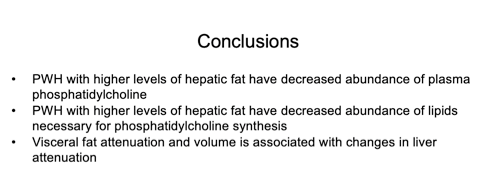
Abstract
HIV-INFECTED PERSONS WITH HEPATIC STEATOSIS HAVE A UNIQUE PLASMA LIPIDOME
Curtis Gabriel, Celestine N. Wanjalla, Mona Mashayekhi, Samuel Bailin, Morgan Lima, LaToya Hannah, Beverly Woodward, Manhal Izzy and John Koethe, Department of Medicine, Vanderbilt University Medical Center
Background: People living with HIV (PLWH) develop non- alcoholic fatty liver disease (NAFLD) at a higher rate and at a lower body mass index than HIV-negative persons. The mechanisms that predispose PLWH to NAFLD are not fully understood but may involve changes in the plasma lipidome that activate immune pathways and contribute to metabolic dysregulation, inflammation and fibrosis in the liver. The plasma lipidome has not been previously characterized in PLWH with NAFLD. In this study, we aimed to identify unique lipid species that differentiate PLWH with evidence of hepatic steatosis (HS) on CT scan from those without.
Methods: Adult PLWH on antiretroviral therapy with immunologic recovery and sustained plasma viral suppression underwent non- contrasted abdominal CT scans to assess liver attenuation in Hounsfield units as a marker of hepatic steatosis. Plasma was collected after an overnight fast. Untargeted lipidomics profiling was performed using liquid chromatography-mass spectrometry and LipidMatch annotation software (University of Florida). MetaboAnalyst (McGill University) was used for statistical analysis.
Results: There were 109 cohort participants with a mean age of 47, BMI of 33, and CD4 cell count of 849 cells/mm3 . 76% were male and 50% self- identified as Caucasian. PLWH in the lowest CT attenuation decile (i.e., indicative of significant HS; group A) had a unique plasma lipidomic signature relative to those in the highest CT attenuation decile (i .e ., indicative to minimal to no HS; group B) as measured by multivariate partial least squares discriminant analysis (PLS-DA)(data not shown). There was a higher abundance of triglyceride and oxidized triglyceride species in group A, whereas choline-containing lipid species were higher in group B (see figure). Plasma cardiolipin was more abundant in group B . Notably, groups A and B did not differ by BMI or age .
Conclusion: PLWH with hepatic steatosis on imaging have decreased levels of choline-containing lipid species and higher levels of triglyceride species compared with PLWH with minimal to no HS. Although enrichment of plasma triglyceride species has been previously described in relationship to HS, there is a paucity of data linking plasma phosphocholines to HS in PLWH and HIV-negative persons. Further studies will include HIV-negative groups to determine whether the described plasma lipidome changes are specific to PLWH.
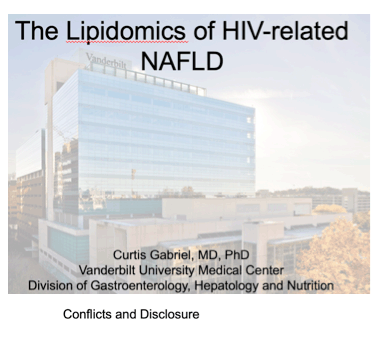
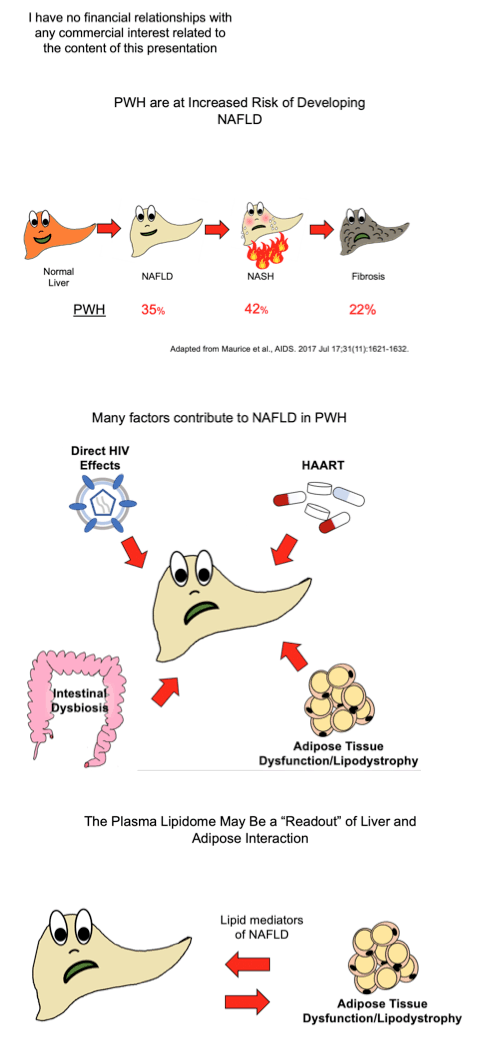
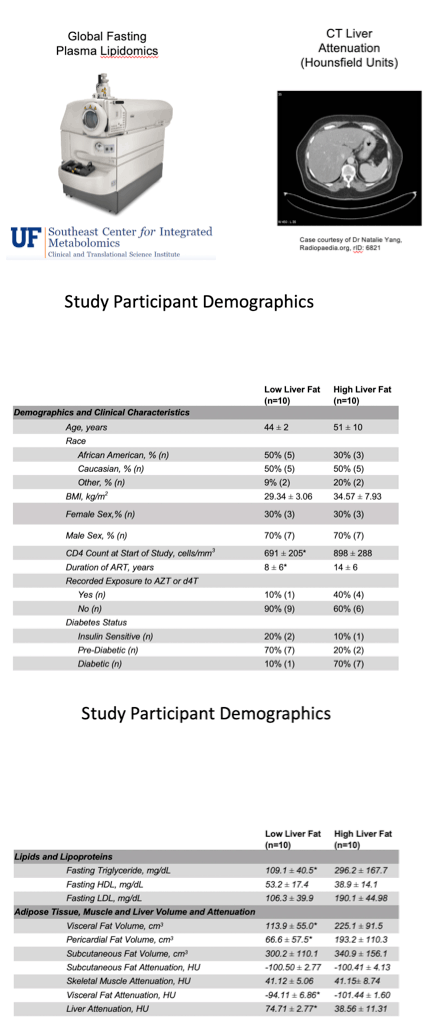
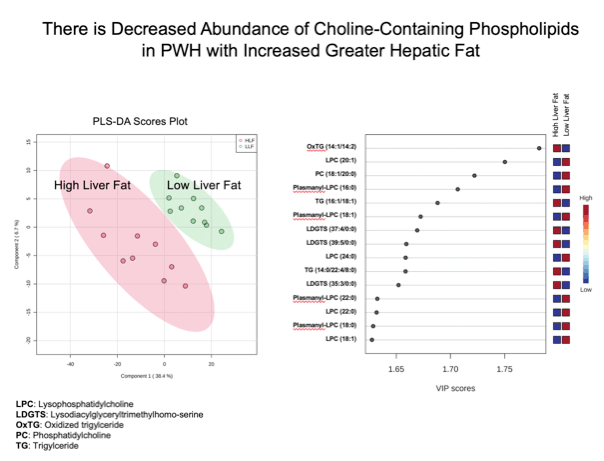
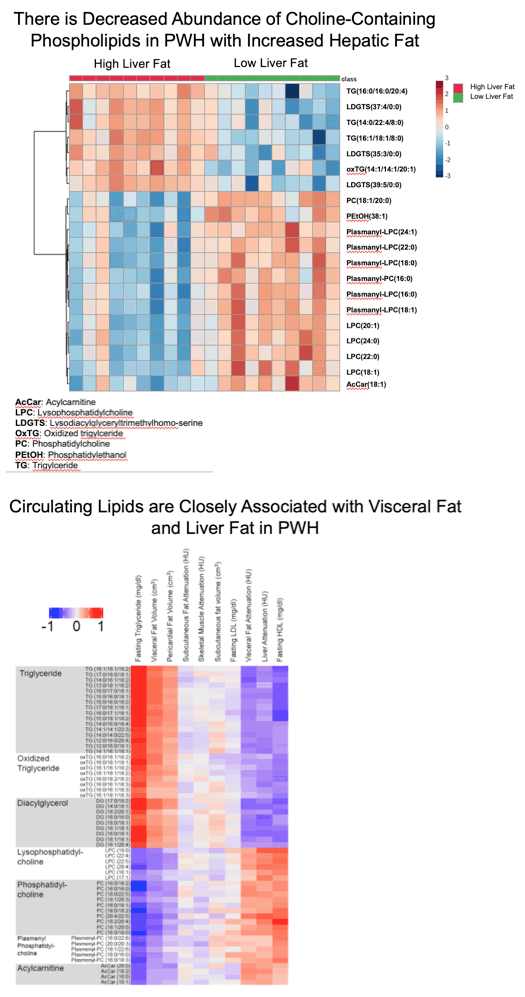
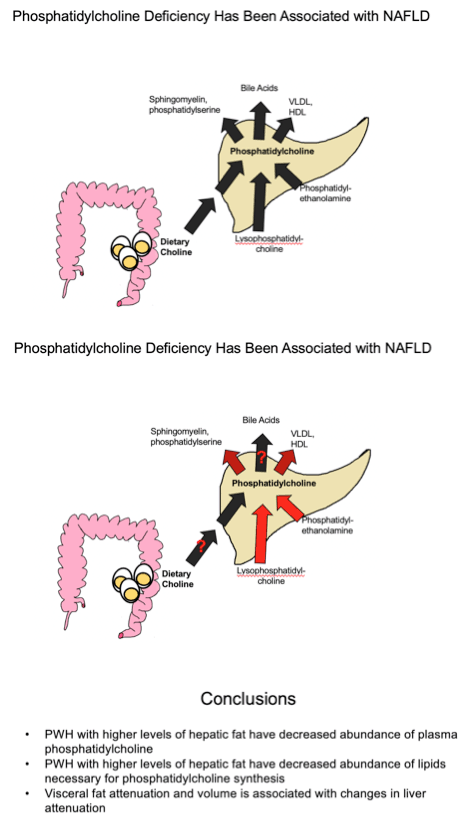
|
| |
|
 |
 |
|
|